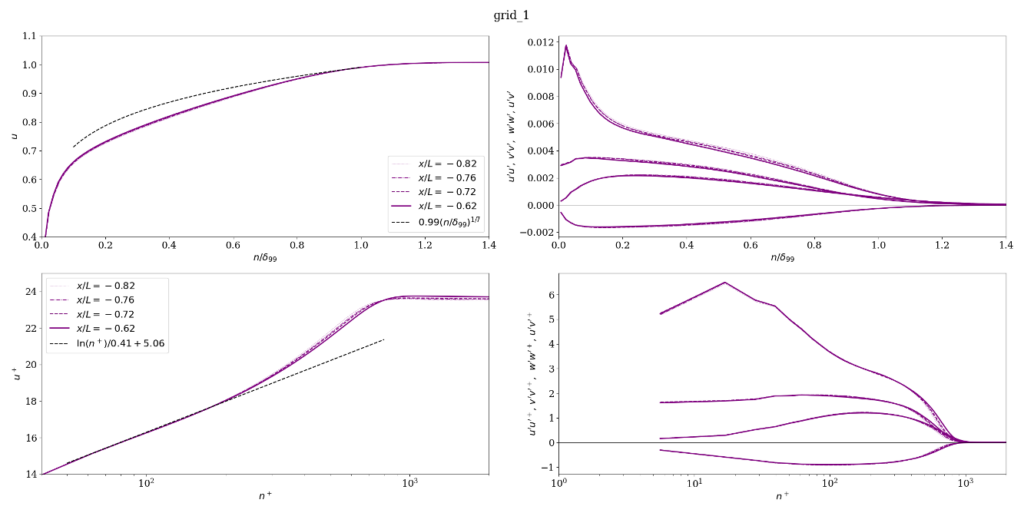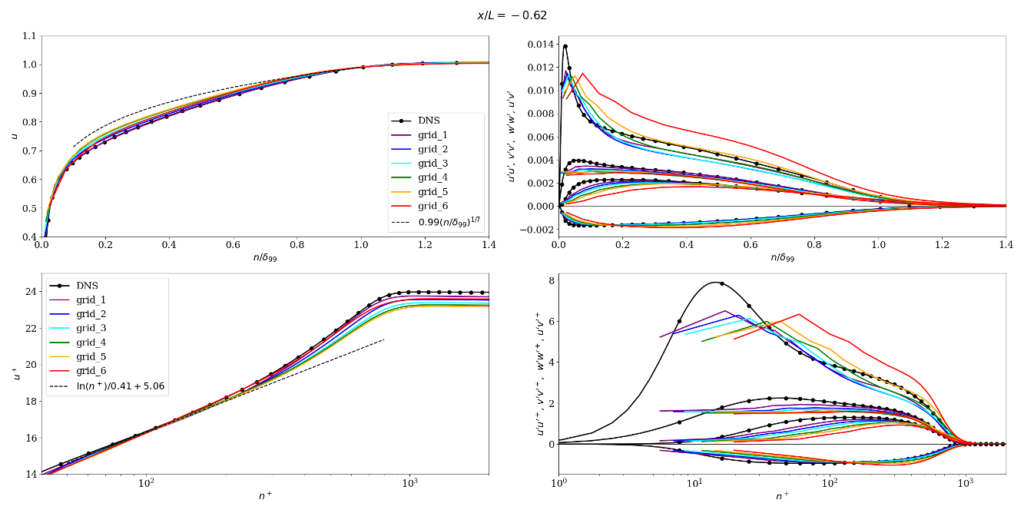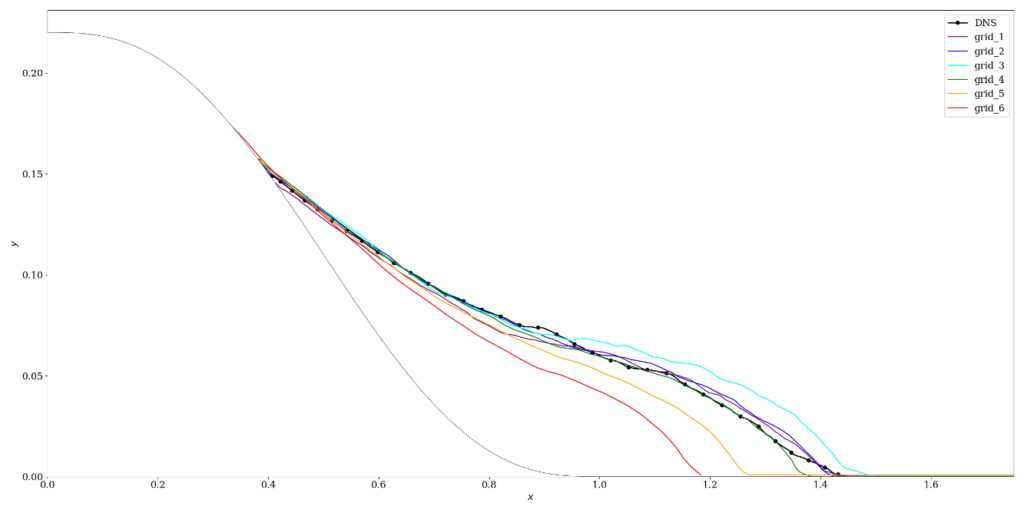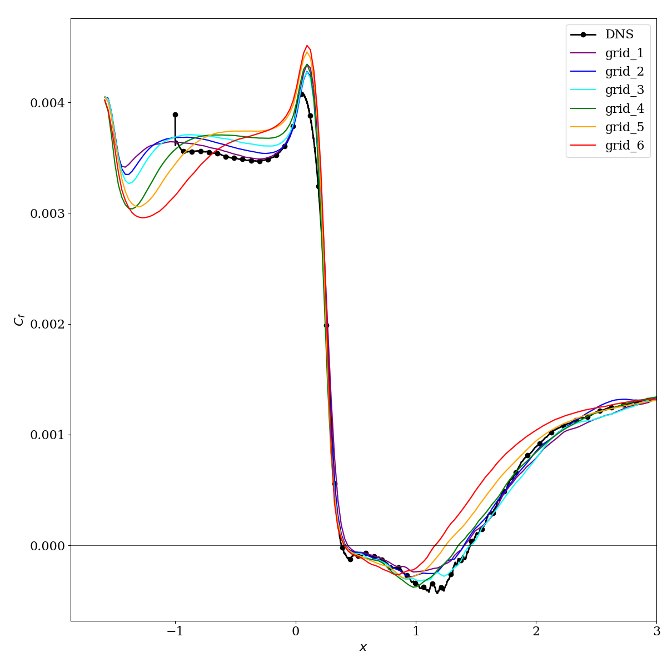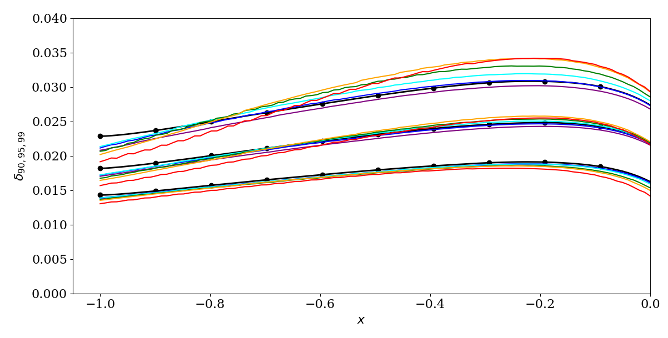The results from the uPDE solver developed in the Bermejo-Moreno group at the University of Southern California are shown here.
uPDE implements an unstructured finite-volume solver with nominally second-order accuracy and low-dissipation numerics. The Vreman subgrid SGS model with original model coefficient of C=0.07 was used in these simulations, along with a standard equilibrium wall-model based on Kawai & Larsson (2012) was used. For every wall boundary face, the exchange location is taken as the closest cell centroid to a specified exchange height \(h_{\rm wm}=0.1\delta_{\rm ref} = 0.0028L\). A four-stage, fourth-order Runge-Kutta time-stepping method was used to advance in time. The inflow turbulence was generated by a digital filtering method.
The full results considered at the 2024 workshop are available here. Below are some key plots. In addition to those base results, two different variations were considered:
- The influence of the spanwise domain size. For one of the coarser grids (grid 4), the spanwise domain width was doubled and quadrupled. The results are found here.
- The influence of the wall-model exchange location. For grid 4, the wall-model thickness \(h_{\rm wm}\) was doubled and cut in half. The results are found here.
